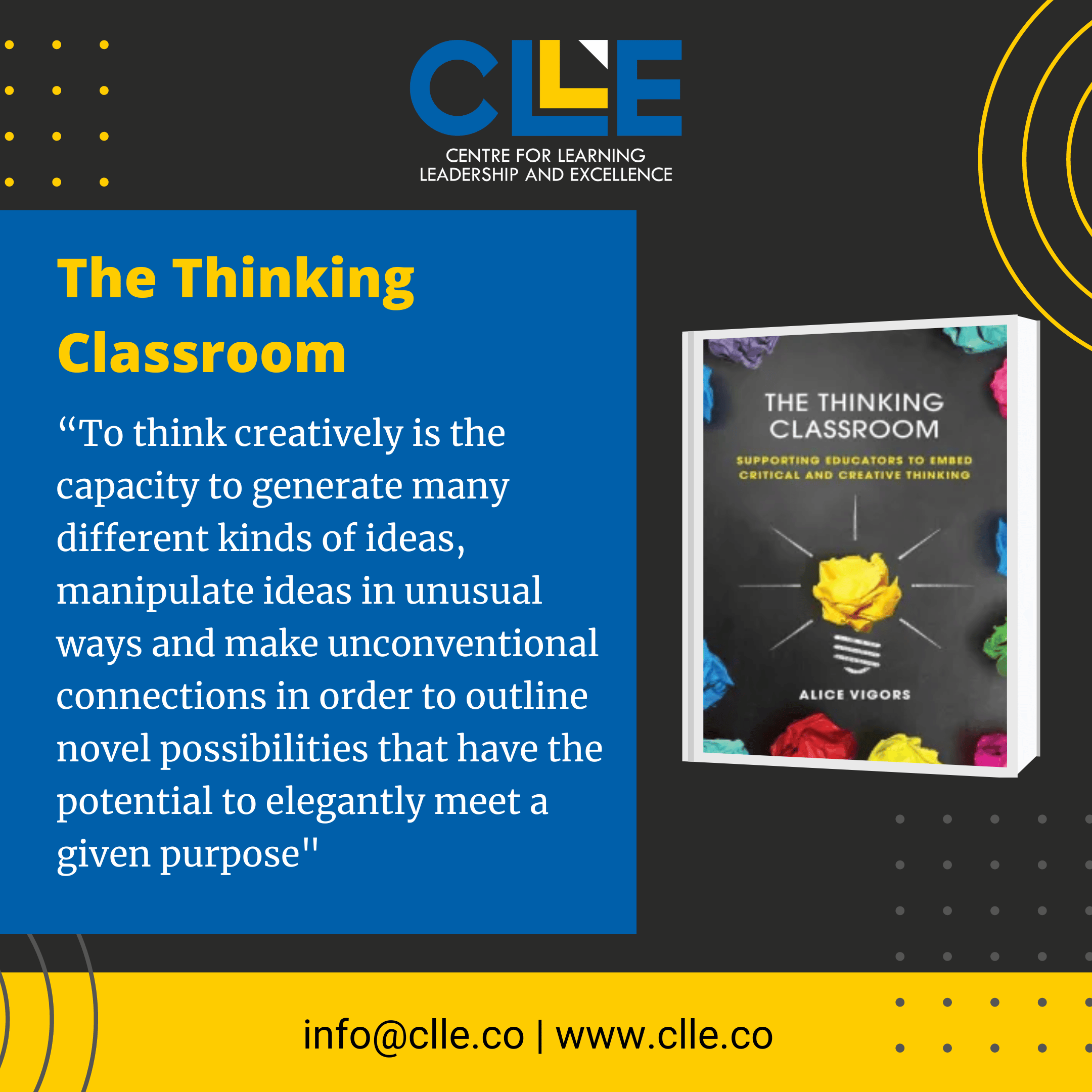Centre for Learning Leadership and Excellence
No. 48, Sri Kamakoti, Second Floor, 12th Main Road, Jayanagar 4th T Block East, Jayanagar 3rd Block, Bengaluru - 560011


Creative thinking, in its simplest form, is the ability to make something new. The mental process of thinking creatively requires students to draw on their imagination, using their skills to combine, change, reshape, refine or improve ideas and solutions (Cash, 2011). Creative thinking is, at its core, a generative process that focuses on the number of ideas as well as the range of ideas generated. It relies on one’s ability to manipulate and play around with ideas, looking from a range of perspectives in order to find the best and most innovative solution for a problem. The Australian Council for Educational Research (ACER) defines creative thinking as: “To think creatively is the capacity to generate many different kinds of ideas, manipulate ideas in unusual ways and make unconventional connections in order to outline novel possibilities that have the potential to elegantly meet a given purpose.” (Ramalingam, Anderson, Duckworth, Scoular & Heard, 2020) What is important to note is that while creative thinking has its foundation in the generation of numerous ideas, ensuring that the ideas generated are of high quality is important. In a classroom setting, students need to be able to distinguish between ideas that are ‘good’ and those that are not going to achieve the intended purpose or desired outcome.Goal: The goal of creative thinking, therefore is to explore many ideas, generate several possibilities and look for many ‘right’ answers. Critical thinking plays a crucial role in a student’s ability to problem-solve.
Examples of creative thinking skills: In the classroom, there are a number of verbs that teachers use that draw on creative thinking skills, including:
While this is by no means an exhaustive list, it provides a clear snapshot for educators about some of the tasks that require students to draw upon their creative thinking skills and what that type of thinking is requiring our students to do. For example, imagining requires our students to form a mental picture of something by piecing together snippets of information to form a larger picture. This type of thinking also asks our students to draw on their understanding and prior knowledge of a broad range of areas to make sense of something. Some of our students find this an easy task to perform, while others find it a little more challenging.